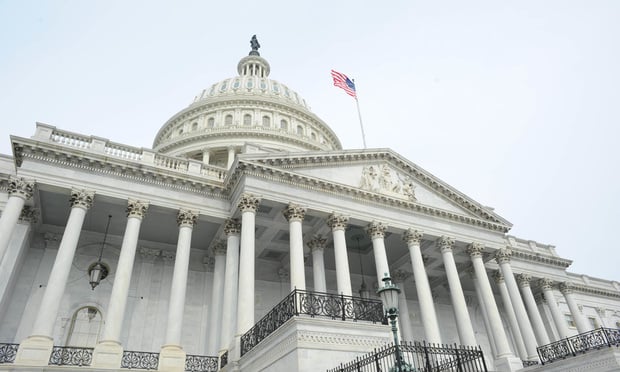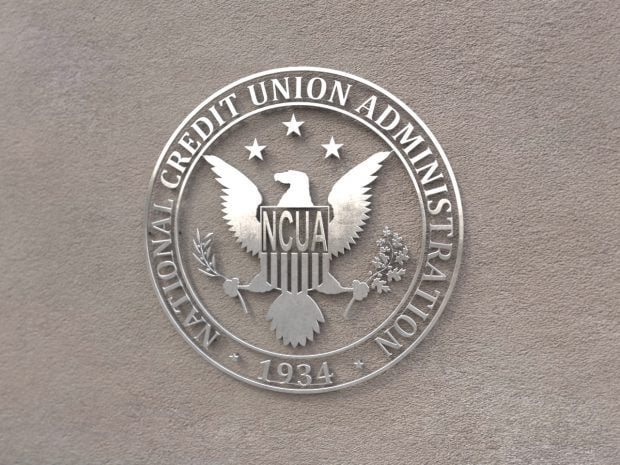UPDATE: 11:44 A.M. EST
Now that an appeals court has upheld the structure of the CFPB, credit union trade groups said they will continue to push Congress to transform the agency into a five-member commission.
The full District of Columbia Circuit Court of Appeals ruled that the agency's structure of having one director, who may only be removed for cause, is not unconstitutional.
Recommended For You
The decision is a defeat for the Trump Administration, which had agreed with the argument made by PHH—a mortgage company—that challenged the constitutionality of the agency.
Credit union trade groups supported PHH's position.
Now, those groups will continue to push Congress.
"CUNA maintains that the best leadership structure for the CFPB is a multi-member commission, as recent leadership disputes have shown," said CUNA President/CEO Jim Nussle. "Financial institutions and consumers need certainty at the CFPB. A leadership commission would have avoided a lot of legal wrangling and provided certainty at an agency that has major influence over the financial services marketplace."
NAFCU officials agreed.
"While the court upheld the CFPB's structure as constitutional, NAFCU still supports changing the leadership of the bureau from a single director to a five-person commission," NAFCU President B. Dan Berger said.
Credit union trade groups have been pushing for creation of a five-member CFPB commission. During the last Congress, House Financial Services Chairman Jeb Hensarling (R-Texas) pushed a regulatory overhaul bill that would have done just that.
However, this year's version of the regulatory bill—the Financial CHOICE Act—that Hensarling introduced and the House passed retains the single director structure.
Meanwhile, credit union trade groups said they intend to continue to push the CFPB to exempt credit unions from its rules. NCUA Chairman J. Mark McWatters last year sent a letter to then-CFPB Director Richard Cordray saying that credit unions should be exempt from many of the agency's rules.
——–
A federal appeals court on Wednesday upheld the lawfulness of the single-director power structure of the Consumer Financial Protection Bureau, the Obama-era agency undergoing a dramatic shift in focus as Trump-appointed officials take over leadership slots.
The U.S. Court of Appeals for the D.C. Circuit, sitting as a full court, said the president can only remove the director of the agency for cause, not at will. The mortgage company PHH Corp., represented by Gibson, Dunn & Crutcher, had argued the leadership scheme lacked accountability.
"Applying binding Supreme Court precedent, we see no constitutional defect in the statute preventing the president from firing the CFPB director without cause. We thus uphold Congress's choice," Judge Nina Pillard wrote for the court. Pillard also said:
"Congress's decision to provide the CFPB Director a degree of insulation reflects its permissible judgment that civil regulation of consumer financial protection should be kept one step removed from political winds and presidential will. We have no warrant here to invalidate such a time-tested course."
PHH didn't walk away empty-handed. The company still has a chance to challenge anew the $109 million penalty the agency imposed for alleged misconduct. Wednesday's decision in part reversed an October 2016 ruling by a divided three-judge panel of the D.C. Circuit, which struck down the agency's structure but said the penalty should be revisited. The full D.C. Circuit on Wednesday left intact the panel's ruling that the CFPB had misinterpreted the law at issue in its case against PHH—the Real Estate Settlement Procedures Act.
Judge Brett Kavanaugh, who wrote the 2016 opinion, argued again Wednesday—this time in dissent—that independent agencies should be run by multimember commissions—a design akin to agencies such as the Securities and Exchange Commission and Federal Trade Commission.
"The independent agencies collectively constitute, in effect, a headless fourth branch of the U.S. government. They hold enormous power over the economic and social life of the United States," Kavanaugh wrote. "Because of their massive power and the absence of presidential supervision and direction, independent agencies pose a significant threat to individual liberty and to the constitutional system of separation of powers and checks and balances."
The ruling Wednesday isn't expected to present significant consequences in the short term. President Donald Trump installed White House budget director Mick Mulvaney as the CFPB's interim leader after Thanksgiving, replacing Richard Cordray, the Obama-appointed director who's now running for Ohio governor. Trump has not yet nominated a permanent replacement for Cordray.
The D.C. Circuit's decision would come into play if the winner of the next presidential election tries to replace Trump's director, a position that carries a five-year term. Cordray's term was set to end next July. After Trump's win, there was debate in legal circles and on Capitol Hill over whether the president would—or even could—fire Cordray outright and replace him with his own nominee.
Still, Wednesday's ruling renewed attention on an agency in the spotlight for weeks now. The decision comes as an unrelated legal fight—focused on the acting director of the agency—plays out in the D.C. Circuit.
Lawyers for the consumer bureau's deputy director, Leandra English, are fighting in the D.C. Circuit to overturn a judge who twice now has upheld Mulvaney's role as interim director of the agency. English's lawyers argue Mulvaney's appointment violated the procedure set out in the Dodd-Frank financial reform law, which created the CFPB. They contend English, as deputy director, was next in line to temporarily lead the bureau.
A lawyer for PHH, Gibson Dunn partner Theodore Olson, was not immediately reached for comment about Wednesday's ruling.
Critics of the CFPB's structure had argued the White House should have the power to fire the CFPB director at will, not just for cause. A three-judge panel of the D.C. Circuit in October 2016 found the single-director structure too untethered from White House supervision to be lawful.
In that ruling, Kavanaugh called the director one of the most powerful positions in the capital.
The agency is sure to undergo changes in the next several months—and for the remainder of the Trump presidency. New leadership has already begun to shift priorities. Republican leaders on Capitol Hill thwarted Cordray's signature push to boost the power of consumers to sue banks in court.
Mulvaney has said his team is reviewing the CFPB's cases, and already the agency suspended one investigation and dropped another. The CFPB in its six-year existence has collected billions of dollars in penalties from mortgage companies, lenders and debt-collectors. The Wall Street Journal has reported that companies have spent billions of dollars in compliance costs.
Wednesday's decision in the D.C. Circuit was largely expected. The appeals court at a hearing in May didn't appear inclined to strike down the CFPB's structure as unconstitutional.
Olson of Gibson Dunn had urged the court to dismiss a $109 million penalty that the agency imposed for orchestrating an alleged kickback scheme. Many companies in the financial sector pointed to PHH's case in urging judges around the country to strike a blow against the consumer bureau.
Cordray, amid the tumult over his agency, tried to remain cool and, behind the scenes, tried to lift spirits at times. After the D.C. Circuit panel in October 2016 ruled against the lawfulness of the single-director structure, he sent CFPB staff the lyrics to one of his favorite Bob Dylan songs, "Forever Young."
"Nothing about this ruling will be final in the interim," Cordray wrote in a letter then. "Second, even if this outcome were to stand, which it may or may not, the court went out of its way to state, explicitly, that its proposed remedy on the constitutional claim 'will not affect the ongoing operations of the CFPB.'"
Cordray wrote that memo to staff before Trump won the White House.
© 2025 ALM Global, LLC, All Rights Reserved. Request academic re-use from www.copyright.com. All other uses, submit a request to [email protected]. For more information visit Asset & Logo Licensing.







